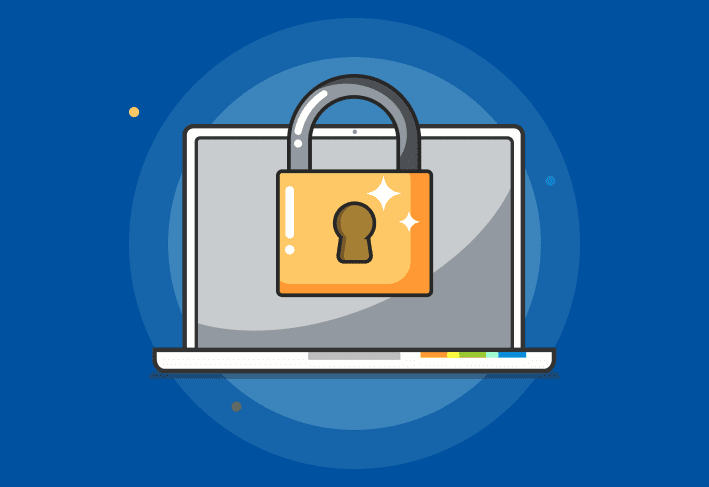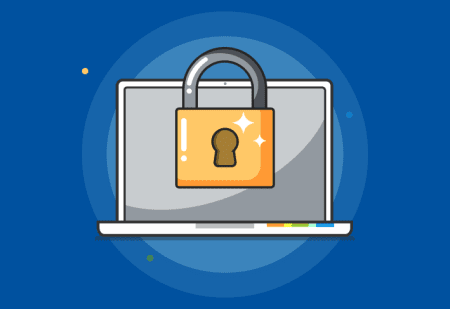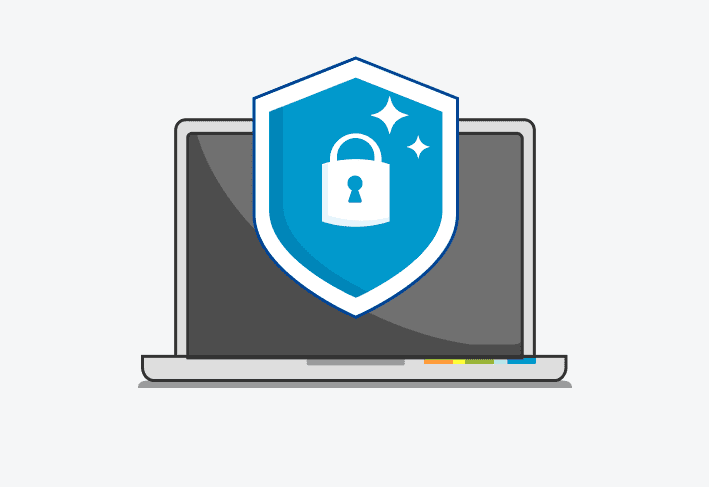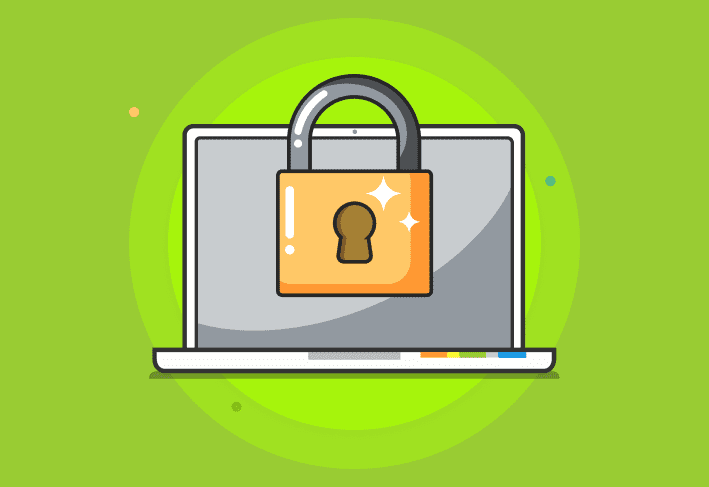Evolving threats call for advanced vulnerability management programs. While you may have state-of-the-art alerting systems, continuous improvement through proactive security practices, like vulnerability management, can help keep you at the top of your game — and, more importantly, enhance your business’s cybersecurity posture.
We’ll share tips on how to build a more effective vulnerability management program. You’ve probably already implemented some of them, but, hopefully, you’ll spot a few areas for growth.
What is risk-based vulnerability management?
Risk-based vulnerability management (RBVM) is an increasingly popular approach advocated by many cybersecurity experts. It involves prioritizing vulnerability remediation based on the threat a security vulnerability poses to your specific organization. If you’re currently using a different approach to risk management, switching to RBVM might give your program an instant upgrade.
Maintain an accurate baseline
You know the importance of IT asset management. We know the importance of IT asset management. But chances are that your leadership team does not fully grasp the importance of IT asset management — at least not enough to dedicate adequate time and resources to the task.
Using IT management software to maintain an up-to-date inventory gives you a more accurate baseline, enhancing visibility, supporting risk assessments, and simplifying vulnerability prioritization. So if you’re setting aside inventory management to focus on other projects, it’s probably a good time to get on top of that.
Conduct cybersecurity tests
Buckle up — it’s time to conduct your favorite cybersecurity tests. Cybersecurity tests can help with identifying vulnerabilities, validating security controls, and meeting compliance requirements.
We won’t break down all the big tests that are worth performing regularly (you can get more of those juicy deets from our article on cybersecurity tests), but we’ll present you with a small sampling platter:
Risk assessment: Better understand your organization's assets, critical systems, and potential vulnerabilities.
Vulnerability scanning: Scan systems for known vulnerabilities, giving you a quick snapshot of your security posture. Providers may offer quick scans, standard scans, in-depth scans, and even scans for specific compliance standards or issues.
Penetration testing: Manually simulate a real attack against a web app or your network.
Assess organizational needs and risks
Now here’s where things get especially tricky. To thoroughly analyze your organizational needs and risks, you’ll need to identify regulatory requirements, industry standards, and compliance obligations — all while taking into consideration the results of your cybersecurity tests.
We know, we know. It’s complicated. And challenging. And time consuming. But once you know your organizational needs and risks, you can establish clear objectives for your vulnerability management program. After all, you can’t crush goals you never made.
Build a cross-functional team
Bringing together a cross-functional team incorporating folks from IT, security, compliance, operations, and other relevant departments can give you a more holistic approach to vulnerability management. Not only can you leverage diverse expertise and optimize your resources, but you may be able to streamline decision-making processes to speed up your response times.
When building a team, define roles clearly so that everyone knows who oversees specific tasks. Giving everyone clear responsibilities can enhance your efficiency, collaboration, and accountability.
Implement the right solutions
A good set of vulnerability management solutions can make your job infinitely easier while making your organization’s environment exponentially more secure. But the right vulnerability management tools for the job depend on your organizational needs and risks, so ... that’s a fun little complication.
At the very least, most businesses benefit from a vulnerability scanner. Vulnerability scanners identify weaknesses so that you can act on them before a threat actor does. And performing an automated vulnerability scan is a pretty easy win for your security team, giving them valuable information to act on.
Vulnerability scans don't need to be confusing or overwhelming. PDQ Detect is a vulnerability scanning and management solution that simplifies your management program with actionable remediation steps.
But don’t stop there! Your vulnerability management program also benefits from inventory and patch management solutions (ideally ✨PDQ✨). The following solutions may also come in handy:
Vulnerability management platform
Configuration management tool
Threat detection tool
Security information and event management (SIEM) platform
Penetration testing tool
Security awareness training platform
Integration and orchestration platform
EDR or XDR solution
Threat intelligence platform
MDR solution
When putting together your vulnerability management tool kit, consider factors such as scalability, automation capabilities, integration with existing systems, and vendor support.
If you just don’t have the bandwidth to oversee all of your threat detection and security incident response tasks in house, a managed detection and response (MDR) service can take some of the load off your shoulders. These third-party services typically provide 24/7 monitoring, threat detection, and incident response.
Standardize processes and workflows
The more streamlined your vulnerability management, the easier it is to sustain.
Standardize your detection, assessment, prioritization, and remediation by developing and documenting a vulnerability management policy, an incident response plan, a patch management plan, and an IT policy. Ideally, these policies and processes should integrate seamlessly into your existing IT operations and workflows so that your vulnerability management program runs like a well-oiled machine.
Automate vulnerability management tasks
Automating as much of your vulnerability management process as possible makes your job that much easier. Heck, if you do it well enough, you might even be able to take that much-needed vacation without any frantic calls from the office.
With the right automation, you can streamline repetitive tasks, like vulnerability scanning, detection, prioritization, and patch management, so that you remediate vulnerabilities more quickly and with less effort. And isn’t “less effort” the most beautiful thing you’ve ever heard?
Fine-tune your prioritization and remediation
While vulnerability management calls for balanced detection, assessment, prioritization, and remediation, many organizations struggle with prioritizing and remediating vulnerabilities — which is only natural when presented with a long list of vulnerabilities.
Utilizing tools like the Common Vulnerability Scoring System (CVSS), you can establish clear criteria for prioritizing vulnerabilities based on factors such as severity, exploitability, effort to fix, and potential impact to your specific environment. This allows you to allocate resources appropriately and focus your efforts on tackling the most critical threats first.
But with so many vulnerabilities, CVSS just isn’t enough. Prioritizing via CISA KEV database or business context can help narrow your approach, but using a vulnerability prioritization platform is likely to make your job much easier.
Train employees
If you’ve spent any time around these parts (by that, we mean the PDQ blog), you’re probably sick of us fawning over cybersecurity training. And the reasons for cybersecurity training. And also how we do our cybersecurity training. To be honest, cybersecurity haunts our dreams. And our nightmares.
But providing employees with regular training on vulnerability management and cybersecurity best practices can help them make better decisions and empower them to report possible security incidents more quickly.
Stay informed
We hope you’re paying attention to the latest known vulnerability, because malicious actors sure are. Once an identified vulnerability is announced, attackers scramble to exploit it before businesses like yours have time to patch it.
That’s why it’s so crucial to pay attention to the latest security threats and vulnerabilities by monitoring security advisories, subscribing to security mailing lists, and participating in industry forums.
Keeping track of the latest Windows updates doesn’t need to be a pain. We’ll update you on the major highlights (and lowlights) every Patch Tuesday.
Keep refining your program
Continuing to improve and build on your program should be part of any vulnerability management process. Routinely evaluate the effectiveness of your program, identify areas for improvement, and incorporate stakeholder feedback. No program is perfect. But continuing to revisit your process inches you that much closer.
PDQ is here to help simplify your vulnerability management program with style and panache. And, more importantly, with automated patch management. PDQ Deploy & Inventory and PDQ Connect make maintaining an up-to-date inventory and deploying patches a breeze. Sign up for a free trial to see for yourself.





